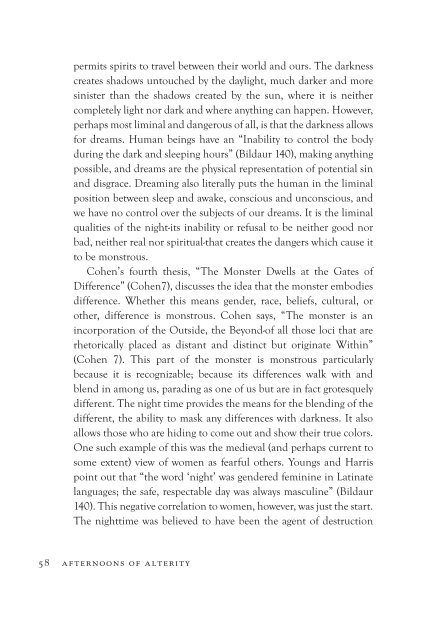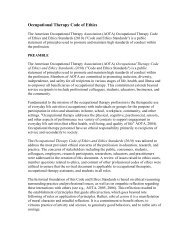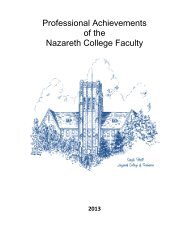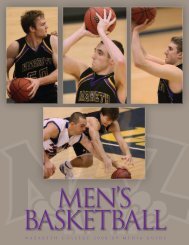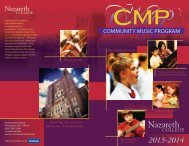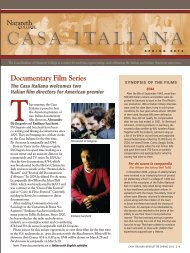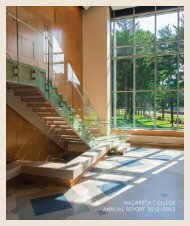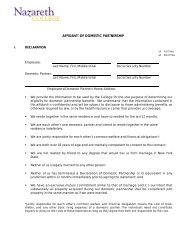Afternoon of Alterity - Nazareth College
Afternoon of Alterity - Nazareth College
Afternoon of Alterity - Nazareth College
Create successful ePaper yourself
Turn your PDF publications into a flip-book with our unique Google optimized e-Paper software.
permits spirits to travel between their world and ours. The darknesscreates shadows untouched by the daylight, much darker and moresinister than the shadows created by the sun, where it is neithercompletely light nor dark and where anything can happen. However,perhaps most liminal and dangerous <strong>of</strong> all, is that the darkness allowsfor dreams. Human beings have an “Inability to control the bodyduring the dark and sleeping hours” (Bildaur 140), making anythingpossible, and dreams are the physical representation <strong>of</strong> potential sinand disgrace. Dreaming also literally puts the human in the liminalposition between sleep and awake, conscious and unconscious, andwe have no control over the subjects <strong>of</strong> our dreams. It is the liminalqualities <strong>of</strong> the night-its inability or refusal to be neither good norbad, neither real nor spiritual-that creates the dangers which cause itto be monstrous.Cohen’s fourth thesis, “The Monster Dwells at the Gates <strong>of</strong>Difference” (Cohen7), discusses the idea that the monster embodiesdifference. Whether this means gender, race, beliefs, cultural, orother, difference is monstrous. Cohen says, “The monster is anincorporation <strong>of</strong> the Outside, the Beyond-<strong>of</strong> all those loci that arerhetorically placed as distant and distinct but originate Within”(Cohen 7). This part <strong>of</strong> the monster is monstrous particularlybecause it is recognizable; because its differences walk with andblend in among us, parading as one <strong>of</strong> us but are in fact grotesquelydifferent. The night time provides the means for the blending <strong>of</strong> thedifferent, the ability to mask any differences with darkness. It alsoallows those who are hiding to come out and show their true colors.One such example <strong>of</strong> this was the medieval (and perhaps current tosome extent) view <strong>of</strong> women as fearful others. Youngs and Harrispoint out that “the word ‘night’ was gendered feminine in Latinatelanguages; the safe, respectable day was always masculine” (Bildaur140). This negative correlation to women, however, was just the start.The nighttime was believed to have been the agent <strong>of</strong> destruction58 afternoons <strong>of</strong> alterity


